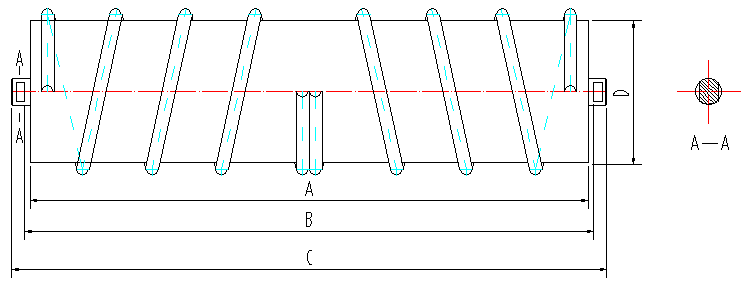 Afrikaans
Afrikaans  Albanian
Albanian  Amharic
Amharic  Arabic
Arabic  Armenian
Armenian  Azerbaijani
Azerbaijani  Basque
Basque  Belarusian
Belarusian  Bengali
Bengali  Bosnian
Bosnian  Bulgarian
Bulgarian  Catalan
Catalan  Cebuano
Cebuano  Corsican
Corsican  Croatian
Croatian  Czech
Czech  Danish
Danish  Dutch
Dutch  English
English  Esperanto
Esperanto  Estonian
Estonian  Finnish
Finnish  French
French  Frisian
Frisian  Galician
Galician  Georgian
Georgian  German
German  Greek
Greek  Gujarati
Gujarati  Haitian Creole
Haitian Creole  hausa
hausa  hawaiian
hawaiian  Hebrew
Hebrew  Hindi
Hindi  Miao
Miao  Hungarian
Hungarian  Icelandic
Icelandic  igbo
igbo  Indonesian
Indonesian  irish
irish  Italian
Italian  Japanese
Japanese  Javanese
Javanese  Kannada
Kannada  kazakh
kazakh  Khmer
Khmer  Rwandese
Rwandese  Korean
Korean  Kurdish
Kurdish  Kyrgyz
Kyrgyz  Lao
Lao  Latin
Latin  Latvian
Latvian  Lithuanian
Lithuanian  Luxembourgish
Luxembourgish  Macedonian
Macedonian  Malgashi
Malgashi  Malay
Malay  Malayalam
Malayalam  Maltese
Maltese  Maori
Maori  Marathi
Marathi  Mongolian
Mongolian  Myanmar
Myanmar  Nepali
Nepali  Norwegian
Norwegian  Norwegian
Norwegian  Occitan
Occitan  Pashto
Pashto  Persian
Persian  Polish
Polish  Portuguese
Portuguese  Punjabi
Punjabi  Romanian
Romanian  Russian
Russian  Samoan
Samoan  Scottish Gaelic
Scottish Gaelic  Serbian
Serbian  Sesotho
Sesotho  Shona
Shona  Sindhi
Sindhi  Sinhala
Sinhala  Slovak
Slovak  Slovenian
Slovenian  Somali
Somali  Spanish
Spanish  Sundanese
Sundanese  Swahili
Swahili  Swedish
Swedish  Tagalog
Tagalog  Tajik
Tajik  Tamil
Tamil  Tatar
Tatar  Telugu
Telugu  Thai
Thai  Turkish
Turkish  Turkmen
Turkmen  Ukrainian
Ukrainian  Urdu
Urdu  Uighur
Uighur  Uzbek
Uzbek  Vietnamese
Vietnamese  Welsh
Welsh  Bantu
Bantu  Yiddish
Yiddish  Yoruba
Yoruba  Zulu
Zulu impact bed for belt conveyor
Impact Bed for Belt Conveyor Systems Enhancing Performance and Longevity
Belt conveyors are crucial components in various industries, including mining, manufacturing, and logistics. They facilitate the efficient movement of materials, contributing to streamlined operations. However, to ensure their optimal performance and longevity, it is essential to incorporate effective design elements, such as impact beds.
Understanding Impact Beds
Impact beds, also known as impact rollers or impact stations, are designed to absorb the energy that occurs when materials are loaded onto a conveyor belt. Without proper impact absorption, the sudden force of heavy materials can lead to premature wear and tear on the conveyor system. This can result in costly repairs and downtime, ultimately affecting productivity. Thus, using an impact bed can significantly enhance the overall effectiveness of a belt conveyor.
Functionality of Impact Beds
The primary purpose of an impact bed is to cushion and support the conveyor belt during material transfer. Impact beds typically consist of a series of robust rubber or polymer blocks positioned beneath the conveyor belt. These blocks act as shock absorbers, distributing the load evenly and reducing the stress on the belt and the structure of the conveyor itself. By mitigating the impact forces, these beds help prevent belt sagging and warping, ensuring that the conveyor runs smoothly.
Benefits of Integrating Impact Beds
impact bed for belt conveyor

1. Extended Equipment Lifespan By minimizing the damage caused by heavy material loads, impact beds significantly prolong the life of both the conveyor belt and its components. This translates to lower maintenance costs and fewer disruptions in operations.
2. Improved Material Handling Impact beds promote a more stable and consistent movement of materials, reducing the likelihood of spillage and misalignment. This reliability enhances overall workflow, contributing to higher productivity.
3. Noise Reduction The cushioning effect of impact beds not only protects equipment but also dampens the sound generated during material loading. Quieter operations contribute to a better workplace environment, which can enhance employee well-being.
4. Safety Enhancements By preventing spillage and ensuring that materials are securely transported, impact beds contribute to a safer working environment. This reduces the risk of accidents associated with slipping or falling materials.
Conclusion
Incorporating impact beds into belt conveyor systems is a strategic decision that directly impacts performance and maintenance. By effectively absorbing shock and protecting the conveyor's belt and structural integrity, these systems contribute to improved efficiency and reduced operational costs. As industries continue to seek ways to optimize their processes, the role of impact beds will undoubtedly remain critical in enhancing the reliability and longevity of belt conveyors.
In conclusion, the implementation of impact beds is not merely an option but a necessity for industries relying on belt conveyors. Their benefits extend beyond mere performance to encompass cost savings, enhanced safety, and overall workplace efficiency. By investing in impact bed technologies, businesses can secure a competitive edge and ensure the smooth operation of their material handling systems for years to come.
-
Revolutionizing Conveyor Reliability with Advanced Rubber Lagging PulleysNewsJul.22,2025
-
Powering Precision and Durability with Expert Manufacturers of Conveyor ComponentsNewsJul.22,2025
-
Optimizing Conveyor Systems with Advanced Conveyor AccessoriesNewsJul.22,2025
-
Maximize Conveyor Efficiency with Quality Conveyor Idler PulleysNewsJul.22,2025
-
Future-Proof Your Conveyor System with High-Performance Polyurethane RollerNewsJul.22,2025
-
Driving Efficiency Forward with Quality Idlers and RollersNewsJul.22,2025





























